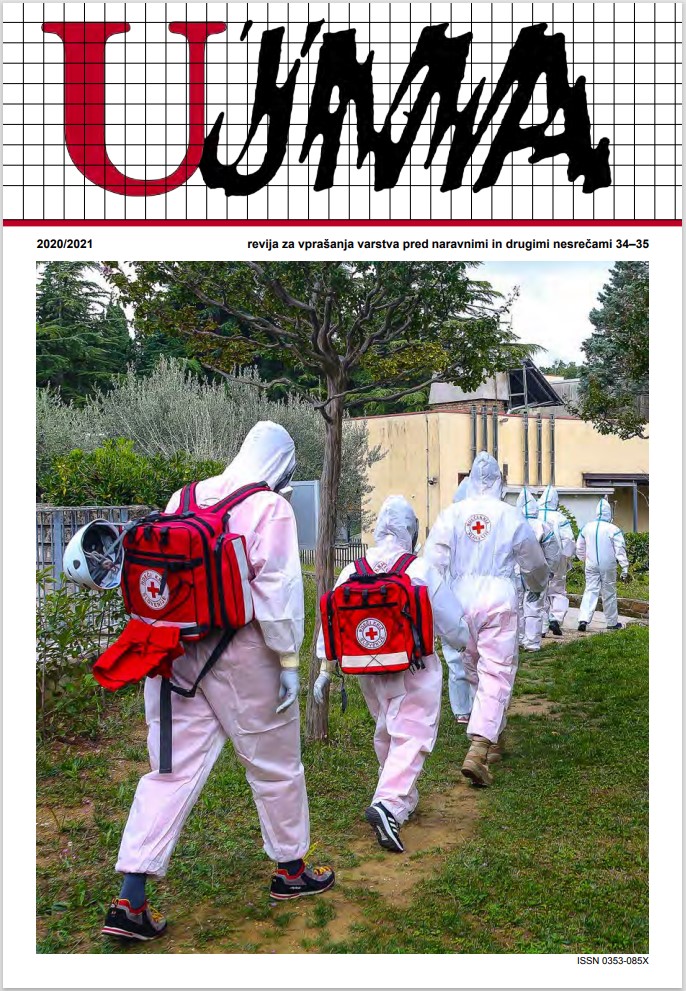THE WATER LEVEL OF RIVERS IN 2019 AND 2020
Abstract
While 2014 was exceptional in terms of above-average water levels and frequent floods, 2015 was extremely dry in hydrological terms. In the following three years, there were no major deviations from the average hydrological conditions in the multiannual period. With a small number of exceptions, the hydrological conditions in 2019 and 2020 were also quite similar to the long-term average. In 2019, there were no major deviations in terms of water levels; overall, the water levels were 7% higher than in the 1981-2010 period. 2019 was marked by 10-50% higher water levels in the western part of the country and approximately 10% lower water levels in the east than in the reference period. The strong increase in flow rates at the beginning of February was somewhat surprising, when the February high water peak on the Reka river near the Cerkvenik mill was the highest in comparison to the reference period, as was the hydrologically dry period that ended as late as October, after a summer with one of the lowest annual flow rates of the Vipava river in Dolenje in comparison to the multiannual period. The water level of rivers with energy potential was rather favourable; there were no major consequences of the hydrologically dry conditions, and during high water levels rivers overflowed only in frequently flooded areas. In 2020, the water levels of rivers were slightly lower than in the previous year. On average, the annual river flow rates were around 10% lower than in the multiannual period. In this year too the water levels of rivers were slightly higher in the west of the country than in the east. In 2020 two particularities stood out: in the first four months of the year, rivers saw a longer and prevalent dry period, which was most prominent in April, and interrupted only by the increase of water levels in March. During this time, the beginning of the vegetation period, the 30-day flow rates on several measuring stations across the state reached record low numbers. In December, rivers flooded on the coast. In addition to precipitation, the floods were also caused by a strong prior saturation of the soil and high sea levels. In 2020, the water levels of the Drava and Soča rivers were above average, while the water level of the Sava river was just below average.
References
Agencija Republike Slovenije za okolje, Hidrološki arhiv Agencije RS za okolje.
Strojan, I., 2019. Mesečni bilteni ARSO, Naše okolje. Pretoki rek. http://www.arso.gov.si/O Agenciji/knjižnica/mesečni bilten.
Mesečni bilten ARSO Naše okolje, Agrometeorološki pregled leta 2019 NASE OKOLJE - December 2019.pdf (gov.si).
Visoke vode in poplave morja med 12. in 20. novembrom 2019. http://www.arso.gov.si/vode/poročila in publikacije/.
Visoke vode in razlivanja rek 29. in 30. maja 2019. http://www.arso.gov.si/vode/poročila in publikacije/.
Visoke vode in poplave rek od 1. do 5. februarja 2019. http://www.arso.gov.si/vode/poročila in publikacije/.
Strojan, I., 2019. Vodnatost rek v letu 2018. Ujma 33, 40–47.
Strojan, I., 2018. Vodnatost rek v letu 2017. Ujma 32, 37–43.
Strojan, I., 2017. Vodnatost rek v letu 2016. Ujma 31, 29–35.
Strojan, I., 2016. Hidrološko suho in toplo leto 2015. Ujma 30, 30–38.
Strojan, I., 2015. Izjemna vodnatost rek 2014. Ujma 29, 35–41.
Strojan, I., 2014. Hidrološko mokro leto 2013. Ujma 28, 40–46.
Downloads
Published
Issue
Section
License

This work is licensed under a Creative Commons Attribution-NonCommercial-NoDerivatives 4.0 International License.
The articles are made available to the public under Creative Commons Attribution-NonCommercial-NoDerivatives 4.0 International (CC BY-NC-ND 4.0).


